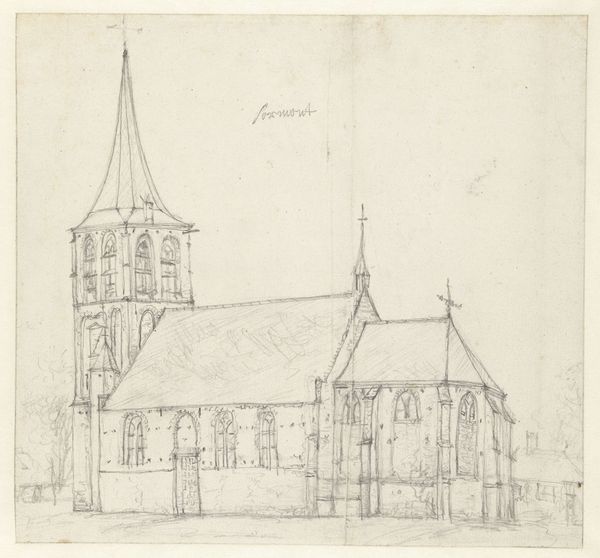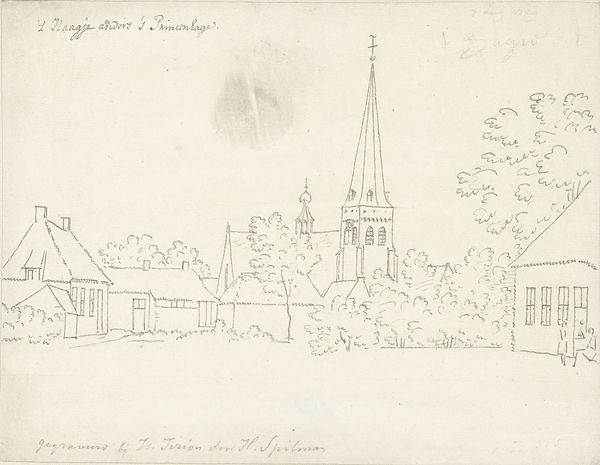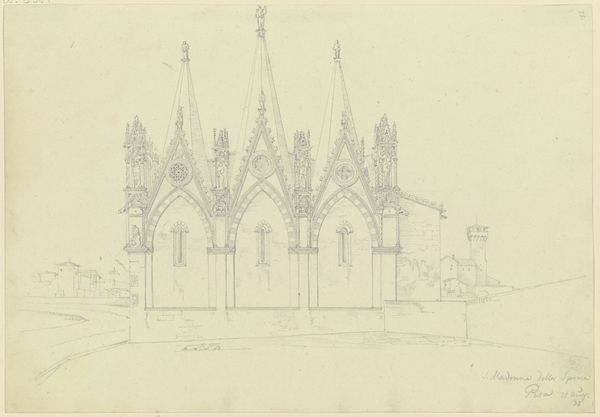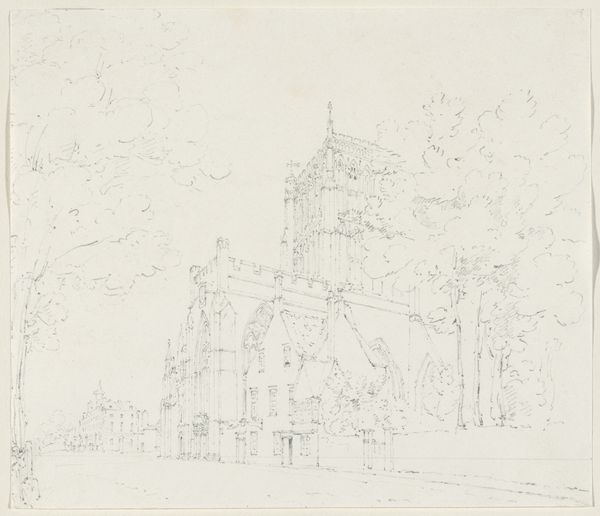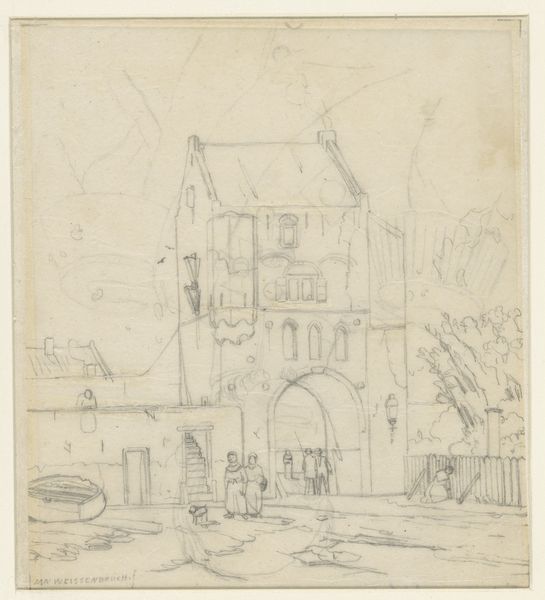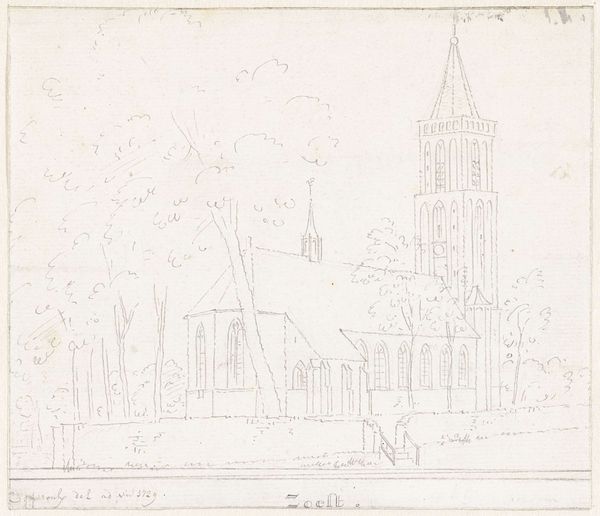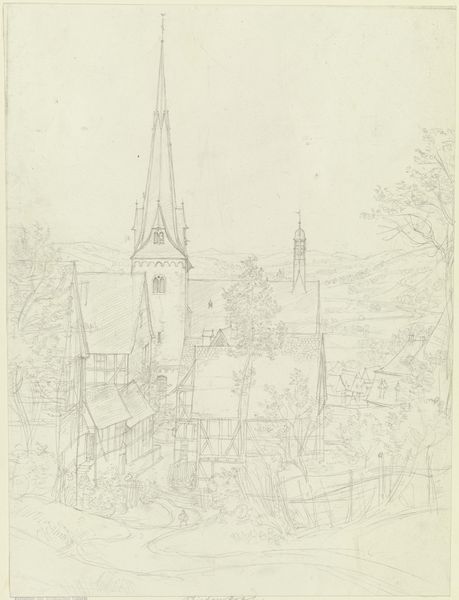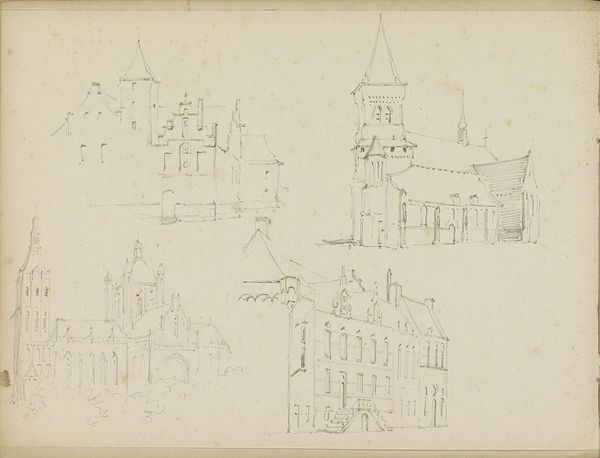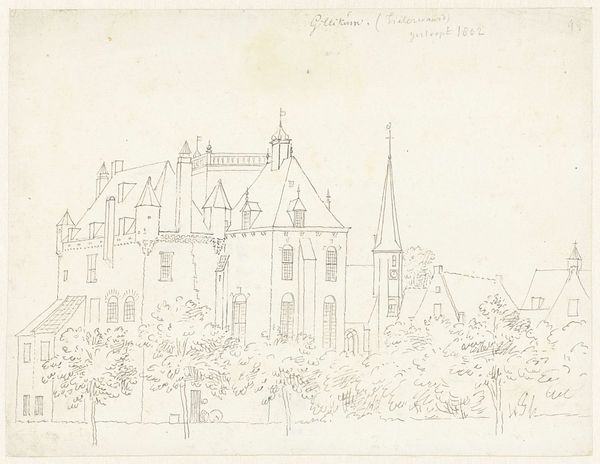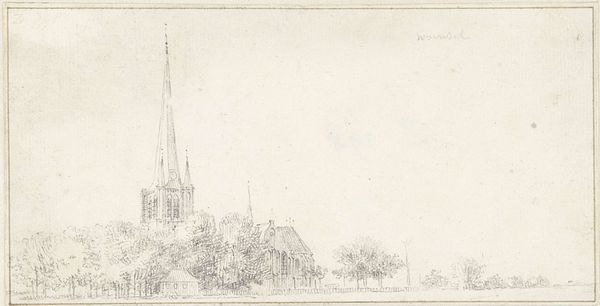
drawing, paper, ink, pen
#
drawing
#
comic strip sketch
#
quirky sketch
#
baroque
#
old engraving style
#
landscape
#
paper
#
personal sketchbook
#
ink
#
sketchwork
#
pen-ink sketch
#
pen work
#
sketchbook drawing
#
pen
#
cityscape
#
genre-painting
#
storyboard and sketchbook work
#
academic-art
#
initial sketch
Dimensions: height 157 mm, width 201 mm
Copyright: Rijks Museum: Open Domain
Curator: Before us we have "Gasthuiskerk te Doesburg," a pen and ink drawing on paper attributed to Cornelis Pronk, likely created sometime between 1701 and 1759. It's currently held at the Rijksmuseum. Editor: It feels so ephemeral! The delicate lines, the airy composition... almost like a memory fading into the landscape. I sense a quiet melancholy here. Curator: That resonates with the image’s possible function. These topographical drawings of buildings were often commissioned, serving as a means of documenting the architectural landscape of the time. The church here, then, might stand for something beyond itself. Editor: A visual record for whom, exactly? Wealthy landowners? The Church itself? We need to consider who had the power to commission and control these narratives. Whose perspective is being prioritized? Curator: Well, that’s where it becomes interesting because, though architectural renderings might suggest order, there’s a subtle dynamism to Pronk’s hand. He doesn't render a static, perfected church. Look closely: his quick strokes convey light, atmosphere, a lived-in feeling. And what of the Gasthuiskerk itself? It speaks of civic care, a tangible expression of communal responsibility... Editor: I’m seeing other echoes too... The Church as a refuge, a place of charity… Yet, haven’t such institutions historically perpetuated social hierarchies and inequalities? We can’t look at the beauty of the architectural details without acknowledging this complex and often contradictory history. Curator: Absolutely. And I’d add that those sharp lines evoke something lasting and indelible, despite that ephemeral quality you identified initially. A testament, perhaps, to the endurance of the built environment and its continued impact on the communities that have evolved around it. Editor: So it is not just about capturing physical presence. By recording this landscape, he's capturing the evolution of power and privilege, something always present in these "objective" records of a place and time. Fascinating! Curator: Indeed. I find the contrast between the fleeting impression and the enduring subject particularly evocative. Editor: A stark reminder that even seemingly objective observations are layered with subjective experiences and interpretations. Thank you for sharing.
Comments
No comments
Be the first to comment and join the conversation on the ultimate creative platform.
